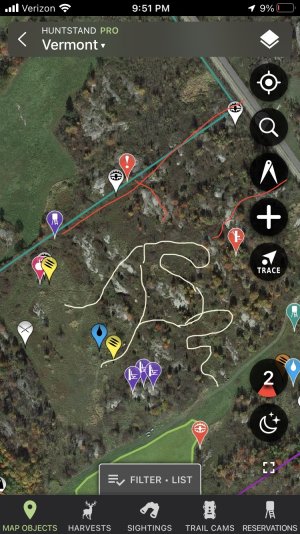Bowsnbucks
5 year old buck +
Boy, did you hit it on the head as far as how our camp property looked before we started logging about 25 or 26 years ago. "Park-like", wide open woods with no cover or browse is what we had. The "chainsaw has been our friend" applies at our place. Getting sunlight on the ground has been great for food and cover.So I am in the "cover is king" boat as well.....especially here in farm country. The only cover of ANY kind is where the land is either too wet or too steep to farm. These areas are where the deer are....and if you can find/create a small pocket of thick nasty stuff, then you really have something. The thing is that you have to maintain it. I have a neighbor that planted trees in old corn fields for commercial purposes. The first decade or so it was great, but now the trees have grown and closed the canopy and the understory is almost gone. This holds true for when you do timber work and the like. You have to keep sunlight to the ground. A term I use and have used is "stem density"......the higher the stem count of the plants and the like in the area the thicker it will be and in my opinion the more likely it will be for deer to use it as cover. Something that Jeff Sturgis talks about in his books is also "depth of cover". Having a long narrow piece of cover isn't nearly as effective as having the same amount of space in in a block. Lastly the other thing I think some people don't grasp is that what the deer like...well it looks like the "$h1t-holes" that was mentioned. They are not "pretty"....in fact they are nasty jungles. I think some people want that "park" look and that is fine, but is sucks for wildlife. I used to be one that didn't understand how cutting down trees could make better habitat. I have since had two cuttings and look forward to the next. The chainsaw is my friend!
I quoted the "sh##holes comment from the Benoit family of hard-core deer hunters of Maine & northeast Vermont. It's the way THEY describe the places where the biggest bucks like to hang out. In my experience here in Pa. - the thickest, crappiest cover is where the biggest bucks will hang. Logging operations and the sun-driven, thicker growth that follows the saws usually brings a flurry of deer travel / bedding. Giving deer a thick, core sanctuary is key to keeping nice deer around.


